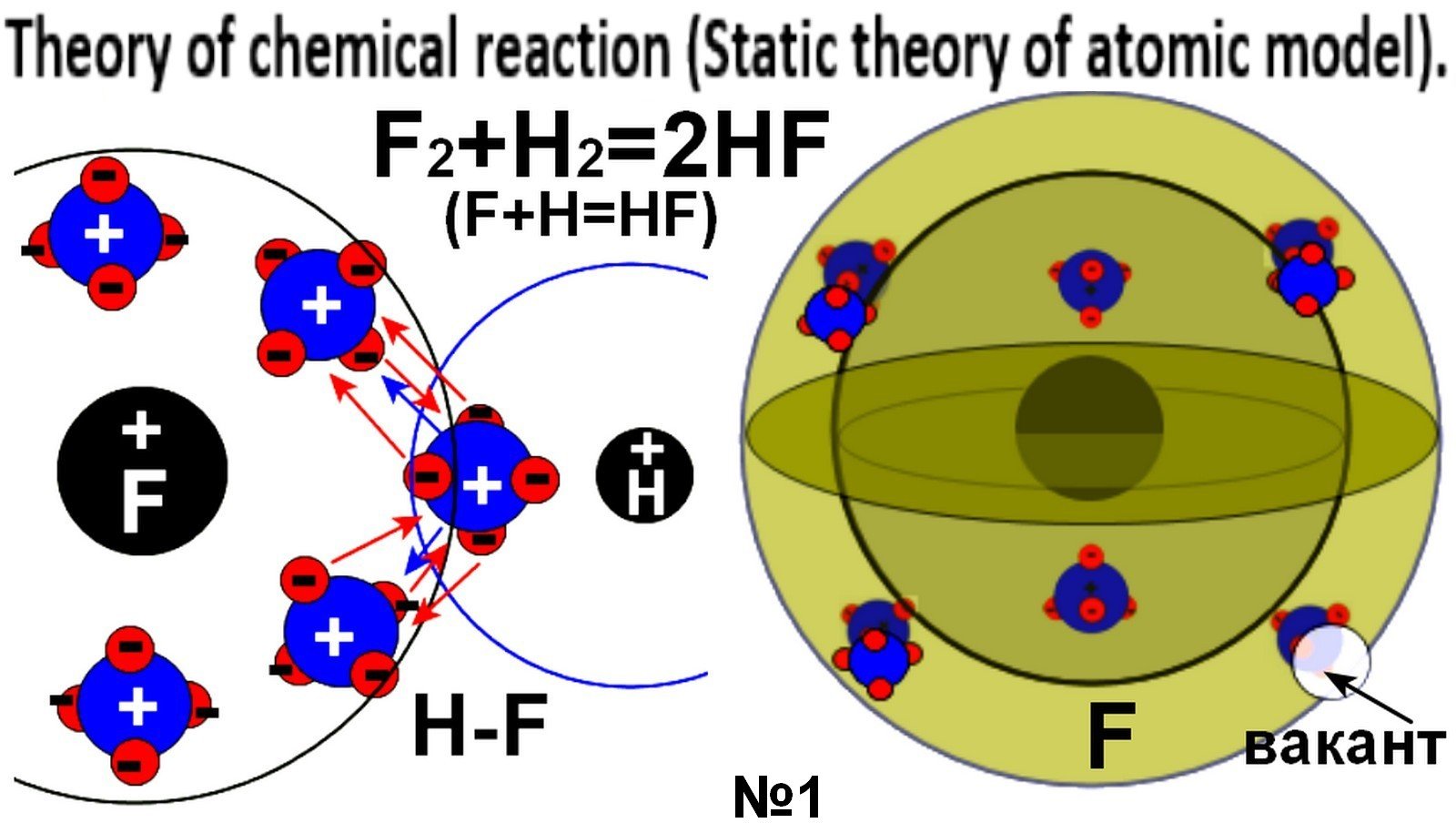You probably checked your phone this morning, brushed your teeth with fluoride toothpaste, and grabbed a snack without thinking twice about it. But what if I told you that behind every single one of these mundane actions lies decades of groundbreaking scientific discovery? The world around you is basically a living, breathing science museum where every object tells an incredible story of human curiosity and innovation. From the antibiotics that saved your life when you were sick to the satellites beaming down directions to your favorite pizza place, science isn’t just something that happens in labs – it’s literally everywhere you look.
The Miracle Mold That Changed Everything

Picture this: in 1928, a messy scientist named Alexander Fleming left some bacterial cultures on his lab bench while he went on vacation. When he came back, he found that one of his petri dishes had been contaminated by a strange blue-green mold. Instead of throwing it away like most people would, Fleming noticed something amazing – the bacteria around the mold had completely disappeared. This accidental discovery became penicillin, the world’s first antibiotic that has saved millions of lives since then. Before penicillin, a simple cut or infection could easily kill you, which is why your great-grandparents were probably way more careful about getting hurt than you are today. The crazy part is that this life-saving medicine almost ended up in the trash because of what looked like a laboratory mistake. Sometimes the best discoveries happen when we least expect them, proving that even failures can lead to world-changing breakthroughs.
Why Your Phone Knows Exactly Where You Are

Every time you open a map app or check in at a location, you’re using technology that relies on at least four satellites orbiting Earth at over 12,000 miles above your head. The Global Positioning System started as a military project in the 1970s, but now it’s so integrated into our daily lives that we panic when our GPS stops working for even a few minutes. These satellites are constantly broadcasting time signals, and your phone calculates your exact position by measuring how long it takes those signals to reach you – kind of like playing cosmic Marco Polo. What’s mind-blowing is that the satellites have to account for Einstein’s theory of relativity because time actually moves slightly faster in space than it does on Earth. Without this adjustment, your GPS would be off by several miles, which means you’d probably end up at the wrong pizza place more often than you’d like.
The Secret Science Behind Your Morning Coffee

That perfect cup of coffee you’re sipping involves more chemistry than you might realize, starting with the Maillard reaction that creates those amazing roasted flavors when green coffee beans are heated. The caffeine molecule is actually a natural pesticide that coffee plants evolved to protect themselves from insects, but humans discovered it gives us a nice energy boost instead. When you add cream or milk to your coffee, you’re witnessing an emulsion – tiny fat droplets suspended in water that would normally separate if not for proteins acting as natural emulsifiers. The temperature of your brewing water matters too because it affects how many flavor compounds get extracted from the coffee grounds. Even something as simple as stirring your coffee involves fluid dynamics, as the swirling motion creates vortices that help mix everything together more efficiently than you probably thought possible.
How Velcro Mimicked Nature’s Design

In 1941, Swiss engineer Georges de Mestral was walking his dog when he noticed how burr seeds stuck annoyingly to both his clothes and his pet’s fur. Instead of just brushing them off and moving on, he examined the burrs under a microscope and discovered they were covered in tiny hooks that grabbed onto fabric loops. This observation led him to create Velcro, which is basically artificial burrs that can stick and unstick thousands of times. The name “Velcro” actually comes from combining the French words “velours” (velvet) and “crochet” (hook), perfectly describing how the system works. This invention is a perfect example of biomimicry – copying nature’s solutions to solve human problems. Today, Velcro is used in everything from shoes to space suits, proving that sometimes the best engineering ideas are hiding right in your backyard.
The Invisible Shield Protecting Your Teeth

That fluoride in your toothpaste is doing something pretty incredible that you can’t see – it’s literally rebuilding your tooth enamel at the molecular level. When bacteria in your mouth produce acid, it starts dissolving the minerals in your teeth, creating tiny holes that could become cavities. Fluoride swoops in like a microscopic superhero and helps deposit new minerals back into those weak spots, making your teeth even stronger than they were before. The process is called remineralization, and it’s happening every single time you brush your teeth. What’s fascinating is that scientists discovered fluoride’s tooth-protecting powers by accident when they noticed that people living in areas with naturally fluoridated water had remarkably fewer cavities. This discovery has prevented more tooth decay than probably any other public health measure in modern history.
Why Ice Floats and Saves All Life on Earth

Here’s something that sounds boring but is actually mind-blowing: water is one of the only substances on Earth that becomes less dense when it freezes, which is why ice cubes float in your drink. Most materials shrink and become denser when they get colder, but water molecules form a crystal structure when they freeze that takes up more space than liquid water. If ice sank instead of floating, every lake and ocean would freeze from the bottom up during winter, killing all aquatic life and making Earth a frozen wasteland. This weird property of water means that ice acts like a protective blanket on top of lakes and ponds, keeping fish and other creatures alive underneath. It’s one of those quirks of chemistry that seems small but actually makes life on our planet possible. Without floating ice, you definitely wouldn’t be here reading this article right now.
The Hidden Mathematics of Your Favorite Songs

Music isn’t just art – it’s pure mathematics in action, with every note corresponding to specific sound wave frequencies that follow precise mathematical relationships. When you hear two notes that sound harmonious together, it’s because their frequencies have simple ratios like 2:1 or 3:2, which your brain interprets as pleasing. An octave higher means exactly double the frequency, while a perfect fifth has a 3:2 ratio that has sounded beautiful to human ears for thousands of years. Even the way instruments produce sound involves fascinating physics, like how guitar strings vibrate in standing wave patterns to create different pitches. The mathematical patterns in music are so fundamental that composers throughout history have used them unconsciously, proving that math and art are way more connected than most people realize. Your brain is basically a sophisticated frequency analyzer that can instantly recognize these mathematical relationships as music.
How Soap Defeats Germs at the Molecular Level

Soap molecules are like tiny molecular warriors with split personalities – one end loves water while the other end loves oil and grease. When you wash your hands, these soap molecules surround germs and dirt particles, with their oil-loving ends grabbing onto the grime while their water-loving ends face outward. This creates microscopic bubbles called micelles that trap the germs and allow water to wash them away completely. What makes this even more effective against viruses like COVID-19 is that soap literally dissolves the fatty outer layer that many viruses need to survive and infect cells. The 20-second handwashing rule isn’t random – it takes that long for soap molecules to properly surround and capture all the germs on your hands. This simple chemical process is one of the most powerful tools we have for preventing disease, which is why doctors have been obsessing over handwashing for over 150 years.
The Space-Age Materials in Your Smartphone

Your smartphone contains more advanced materials than the computers that sent humans to the moon, including rare earth elements that are literally formed inside dying stars. The touchscreen works because of indium tin oxide, a transparent conductor that responds to the electrical charge in your fingertips. Inside the phone, there are tiny processors made from silicon that’s been purified to 99.9999999% purity – cleaner than almost anything else on Earth. The battery uses lithium that was created during the Big Bang, while the speaker magnets contain neodymium that came from ancient supernovas. Even the glass screen is made using a special ion-exchange process that makes it several times stronger than regular glass. Basically, you’re carrying around a piece of the universe that contains elements forged in stellar explosions billions of years ago, all working together to let you scroll through social media.
Why Airplanes Don’t Fall Out of the Sky

Despite what many people think, airplanes don’t stay up because air moves faster over the top of the wing – that’s actually a common misconception that even some textbooks get wrong. The real explanation involves Newton’s third law: wings are angled slightly upward, so they push air downward, and the air pushes back upward with equal force, creating lift. It’s basically the same principle as sticking your hand out of a car window and angling it upward to feel the lift force. The curved shape of the wing does help, but mostly because it allows the wing to push more air downward more efficiently. Jet engines work by sucking in massive amounts of air, compressing it, mixing it with fuel, igniting it, and shooting it out the back at incredible speeds. The forward thrust from this controlled explosion is powerful enough to push a 400-ton airplane through the sky at 500 miles per hour, which is pretty amazing when you think about it.
The Quantum Weirdness Inside Your Computer

Every transistor in your computer relies on quantum mechanics – the bizarre physics of the extremely small where particles can exist in multiple states simultaneously. These transistors are basically quantum switches that control the flow of electrons, and modern processors contain billions of them packed into spaces smaller than your fingernail. The strange thing is that electrons can “tunnel” through barriers that should be impossible to cross, which is both a useful feature and a major headache for computer engineers. As transistors get smaller and smaller, quantum effects become more pronounced, leading to weird phenomena like electrons appearing on the wrong side of walls. Scientists are now working on quantum computers that embrace this weirdness instead of fighting it, potentially creating machines that could solve problems impossible for regular computers. The phone in your pocket is already using quantum mechanics every second, even though the technology seems like pure science fiction.
How Painkillers Trick Your Brain

When you take aspirin for a headache, you’re actually blocking specific enzymes that produce inflammatory chemicals in your body, essentially interrupting the pain signal before it reaches your brain. Your nervous system has its own built-in painkiller system using chemicals called endorphins, which are structurally similar to morphine but produced naturally by your body. Different painkillers work through completely different mechanisms – ibuprofen reduces inflammation, acetaminophen affects brain chemistry, and opioids mimic your natural endorphins but much more powerfully. The fascinating part is that your brain can also create pain where none exists, which is why phantom limb syndrome happens to amputees or why you might feel pain just from watching someone else get hurt. Pain is really your brain’s interpretation of various signals, not just a direct response to injury, which explains why distraction, meditation, or even placebos can sometimes work as well as actual medicine. Understanding pain as a complex brain process rather than a simple alarm system has revolutionized how doctors treat chronic pain conditions.
The Invisible Forces Holding Your World Together

Right now, electromagnetic forces are keeping every atom in your body from falling apart, while nuclear forces hold the centers of those atoms together against incredible repulsive pressures. Gravity seems weak compared to these other forces, but it’s actually the dominant force shaping the universe because it works over vast distances and never cancels out. The electromagnetic force is what keeps your feet on the floor – not because of attraction, but because the electrons in your shoes repel the electrons in the ground with tremendous force. Even when you touch something, you’re not actually making contact at the atomic level; you’re feeling electromagnetic repulsion between electron clouds. These fundamental forces determine everything from why water boils at 100°C to why stars shine, proving that the same physics governing tiny atoms also controls massive galaxies. Without the precise balance of these forces, atoms couldn’t form, chemistry wouldn’t work, and you definitely wouldn’t exist.
How Your Eyes Create a 3D World from Flat Images

Your brain is constantly performing incredible feats of image processing that make the most advanced computers look primitive in comparison. Each eye sees a slightly different view of the world, and your brain combines these two flat images to create the illusion of depth and three-dimensional vision. The blind spot where your optic nerve connects to your retina should create a obvious gap in your vision, but your brain fills in the missing information so seamlessly that you never notice it. Your eyes are also constantly making tiny movements called saccades, but your brain edits out the blurry motion to give you the impression of smooth, stable vision. Color vision involves three types of cone cells that respond to different wavelengths of light, and your brain compares their signals to determine what color you’re seeing. What’s really mind-bending is that the colors you see don’t actually exist in the physical world – they’re entirely created by your brain’s interpretation of electromagnetic radiation.
The Science Behind Your Favorite Junk Food

Food scientists have spent decades figuring out exactly how to make processed foods irresistibly delicious using principles of chemistry, psychology, and even physics. The perfect crunch in potato chips isn’t accidental – it happens at a specific frequency that your brain interprets as fresh and appealing, while the salt crystals are sized to dissolve at just the right rate on your tongue. Sugar creates a reward response in your brain by triggering dopamine release, which is the same neurotransmitter involved in addiction to drugs or gambling. The “bliss point” is a real scientific concept where food manufacturers find the exact combination of sugar, salt, and fat that makes your brain crave more. Even the texture of foods is carefully engineered using emulsifiers, stabilizers, and other additives that create specific mouth-feel experiences. Understanding this food science can help you realize why it’s so hard to eat just one chip – your brain is literally being hijacked by carefully designed chemical combinations.
Why Weather Prediction Is Still Really Hard

Weather forecasting involves solving some of the most complex mathematical equations in science, tracking millions of variables across the entire planet in real-time. The atmosphere is what scientists call a chaotic system, meaning tiny changes can have huge effects – like the famous butterfly effect where a butterfly flapping its wings in Brazil could theoretically cause a tornado in Texas. Modern weather models divide the Earth’s atmosphere into millions of three-dimensional boxes and calculate how air temperature, pressure, humidity, and wind speed change in each box over time. Supercomputers perform quadrillions of calculations to predict what will happen just a few days in the future, but small errors in the initial data grow exponentially with time. This is why weather forecasts are pretty accurate for tomorrow but become unreliable beyond about a week. Meteorologists aren’t just guessing when they give you a 40% chance of rain – they’re telling you that in 4 out of 10 similar weather situations, it actually rained.
The Hidden Chemistry of Cooking

Every time you cook, you’re basically doing chemistry experiments that transform raw ingredients into completely different substances through heat, acids, bases, and enzyme reactions. When you brown meat or toast bread, you’re creating hundreds of new flavor compounds through Maillard reactions between amino acids and sugars – the same process that makes coffee taste amazing. Baking is essentially controlled chemistry where precise ratios of ingredients create specific chemical reactions, which is why baking recipes are much less forgiving than regular cooking. The gluten in bread dough forms long, stretchy protein networks that trap gas bubbles from yeast, creating the airy texture we love in good bread. Even simple things like cutting onions involve chemistry – when you damage onion cells, enzymes convert sulfur compounds into the irritating gas that makes you cry. Understanding the science behind cooking can actually make you a better chef because you’ll know why certain techniques work and how to troubleshoot when things go wrong.
How Social Media Algorithms Read Your Mind

The algorithms that decide what you see on social media are constantly analyzing thousands of data points about your behavior to predict what will keep you scrolling. These systems use machine learning to identify patterns in your clicks, likes, shares, and even how long you pause on certain posts, building a detailed psychological profile of your interests and preferences. The algorithm doesn’t just look at what you engage with – it also considers what time of day you’re most active, what types of content similar users like, and even how your mood might change throughout the week. Variable reward schedules, borrowed from gambling psychology, are built into these platforms to make checking for new content addictive by delivering unpredictable rewards. The goal isn’t to show you what you want to see, but to show you content that will generate the strongest emotional response and keep you engaged for the longest time. Understanding how these algorithms work can help you take back some control over your digital experience and make more conscious choices about your social media consumption.
The Physics of Sports You Play Every Day

Every sport involves physics principles that can mean the difference between winning and losing, even if most athletes apply them instinctively rather than through conscious calculation. A basketball follows a perfect parabolic arc determined by the angle and speed of release, while the backspin creates a Magnus force that helps the ball drop more softly into the hoop. Baseball pitchers use fluid dynamics to make balls curve, drop, or rise by changing the air pressure around the spinning ball as it moves through the atmosphere. When you kick a soccer ball, you’re applying concepts of momentum transfer, where the energy from your leg gets transferred to the ball with maximum efficiency when you hit it at just the right spot. Even running involves complex physics as your body acts like a spring system, storing and releasing energy with each stride to move forward as efficiently as possible. Understanding the physics behind sports can actually improve your performance because you’ll know exactly how to optimize your technique for maximum results.
Why Vaccines Work Like Training for Your Immune System

Your immune system is like a highly sophisticated military force that can learn to recognize and remember specific enemies, and vaccines are basically boot camp for your immune cells. When you get vaccinated, you’re introducing weakened or dead versions of pathogens, or just pieces of them, so your immune system can practice fighting them without getting sick. Memory cells created during this process can live for decades, instantly recognizing the real pathogen if you encounter it later and mounting a defense before you even feel symptoms. The reason you need booster shots for some vaccines is that immune memory gradually fades over time, like forgetting a language you don’t practice regularly. Herd immunity works because when enough people in a community are vaccinated, the disease can’t spread easily between people, protecting even those who can’t be vaccinated due to medical conditions. This cooperative approach to public health shows how individual scientific decisions can have community-wide effects that benefit everyone.
The next time you flip a light switch, take an aspirin, or check your GPS, remember that you’re interacting with centuries of human curiosity and scientific discovery. These everyday miracles didn’t happen overnight – they’re the result of countless researchers asking “what if” and “why does that happen” about the world around them. From Fleming’s moldy petri dish to the quantum computers of tomorrow, science continues to transform ordinary moments into extraordinary possibilities. The most amazing part is that we’re still just scratching the surface of what’s possible when human curiosity meets rigorous investigation. What breakthrough hiding in today’s “failed” experiments will change your life tomorrow?



